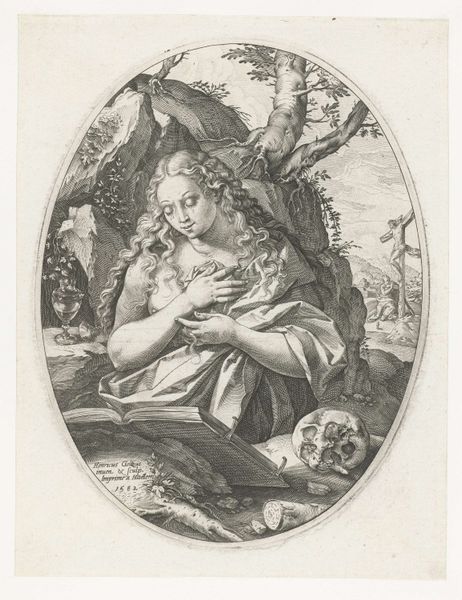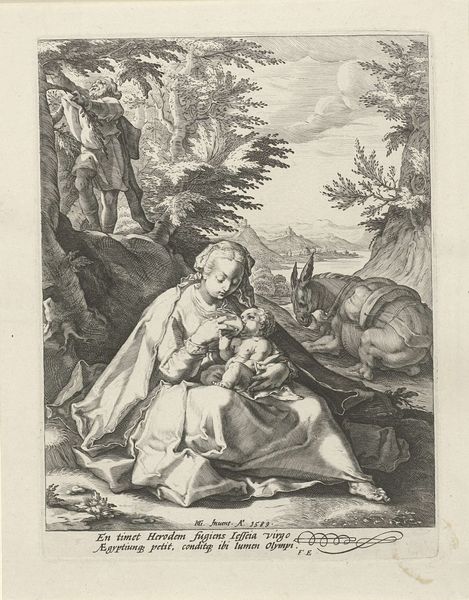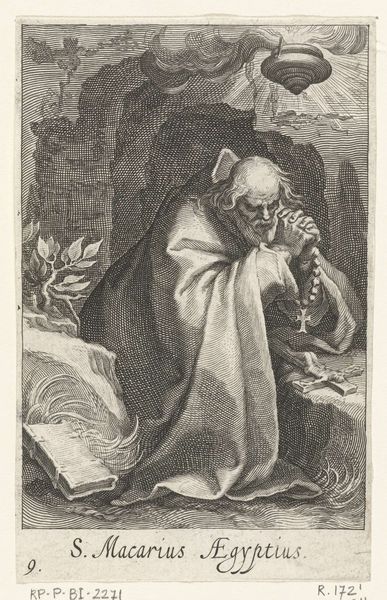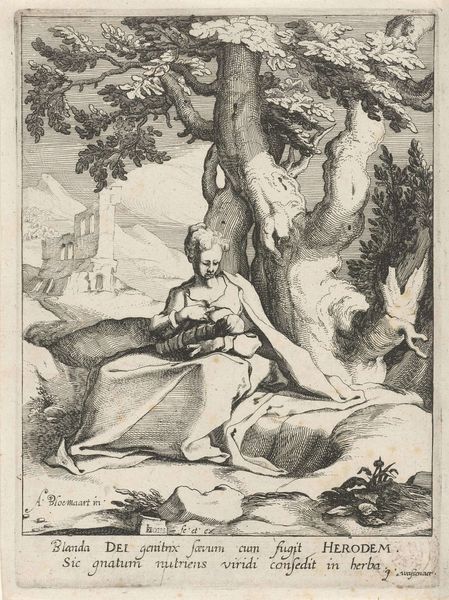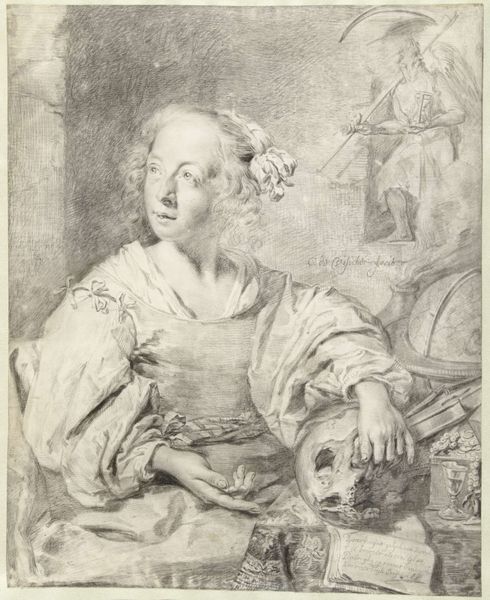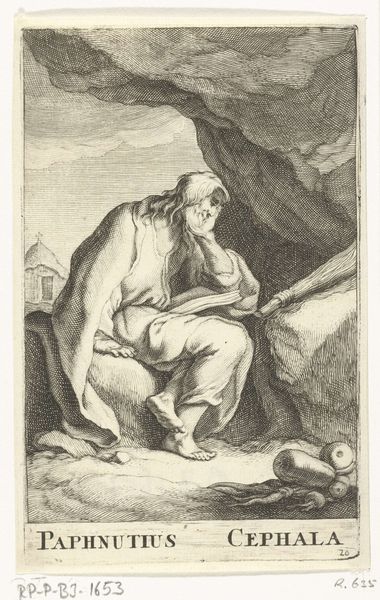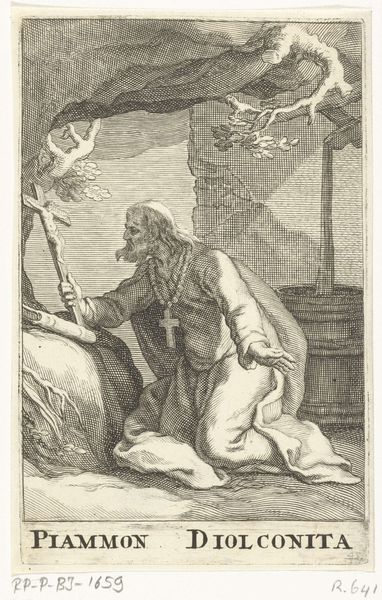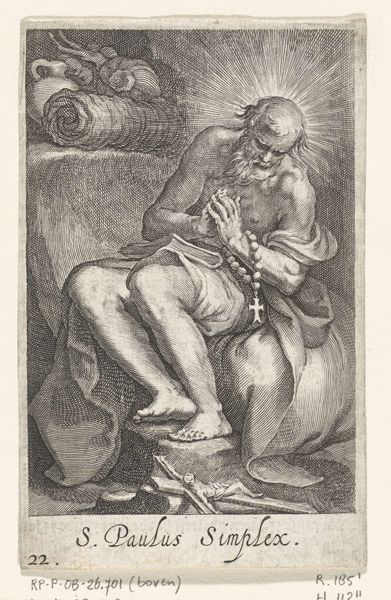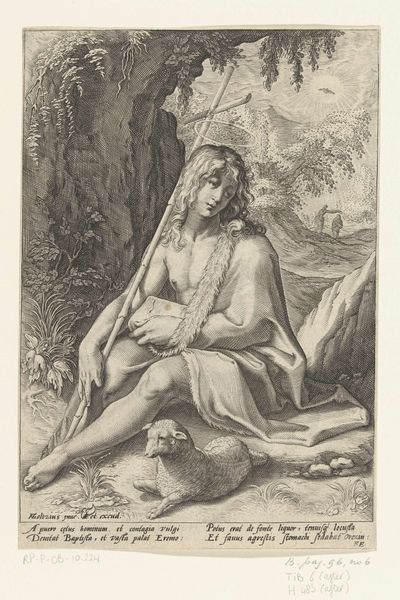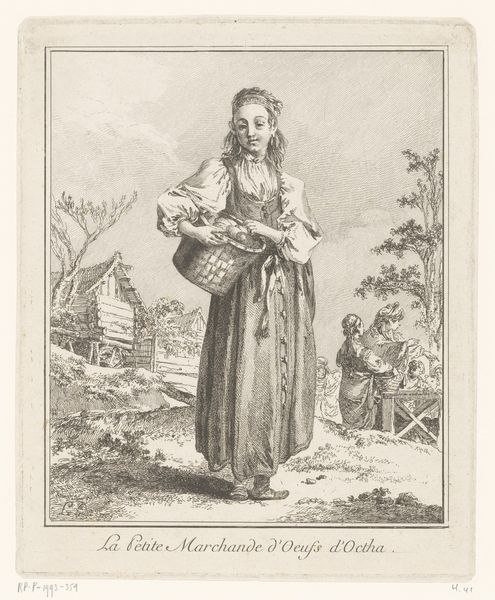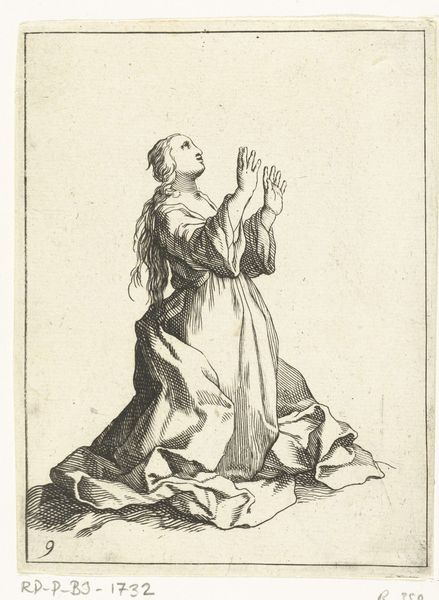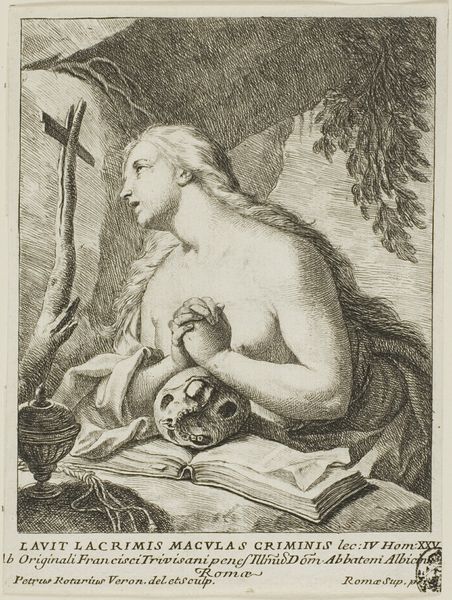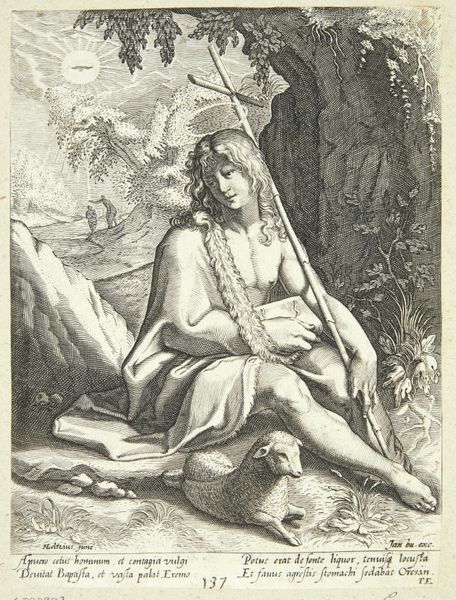
print, engraving
#
baroque
# print
#
landscape
#
figuration
#
history-painting
#
engraving
Dimensions: height 171 mm, width 135 mm
Copyright: Rijks Museum: Open Domain
Curator: Let's take a closer look at Jacob Matham's engraving, "Penitent Mary Magdalene," created between 1588 and 1592. It’s currently housed right here at the Rijksmuseum. What's your first impression? Editor: A somber, almost melancholic mood hangs over it. The detail is remarkable; every strand of hair seems carefully rendered. I find it instantly gripping in its intensity, but there's also something vulnerable about it. The figure is framed within this rugged landscape which only serves to add another layer of dramatic intensity. Curator: The choice of the penitent Magdalene as a subject in this era reveals much about the socio-religious climate. Magdalene, often associated with repentance and spirituality, embodied the changing religious sentiments in a rapidly reforming Europe. Engravings like these served as moral exemplars, circulated widely to influence popular piety and behavior. Editor: Absolutely. It’s clever, actually. There’s this incredible attention to the objects surrounding her – the skull, the cross, the open book– it’s a full blown Renaissance allegory. But the focus is so deeply and intimately upon the emotional state of the woman; there's an almost painful self-awareness in her downcast gaze. Is this really about religious reform, or is it, you know, tapping into something far more personally resonant for viewers? Curator: A crucial aspect is understanding how prints functioned. Matham, as an engraver, disseminated imagery. This image could be copied and reproduced across Europe, spreading not only the visual idea of Magdalene but also associated theological and moral narratives. This piece uses classical motifs, a skill refined under Hendrick Goltzius, skillfully merging devotion with broader humanist culture. Editor: That’s it—it *almost* feels like the dawn of modern confession through visual form, this piece. Her vulnerability becomes the core of its message. The open-ended narrative—you can make your own projection onto this; very, very interesting. Curator: Indeed, examining its artistic choices offers insight into the complexities of the period. Ultimately, prints played an underappreciated, influential role. Editor: Well said, indeed. It makes you wonder, who needs social media when you have 16th-century engravings getting straight to the feels?
Comments
No comments
Be the first to comment and join the conversation on the ultimate creative platform.
